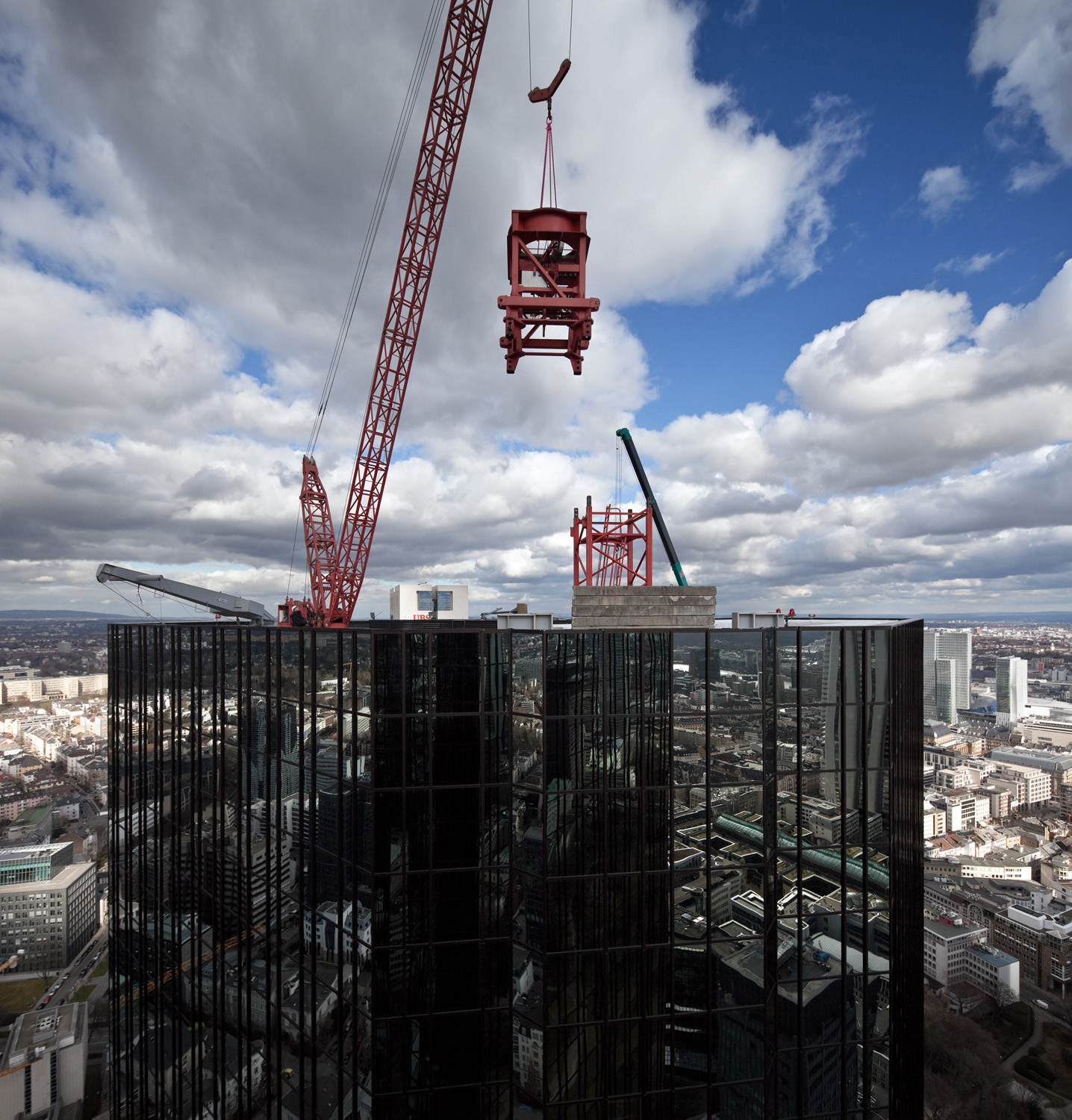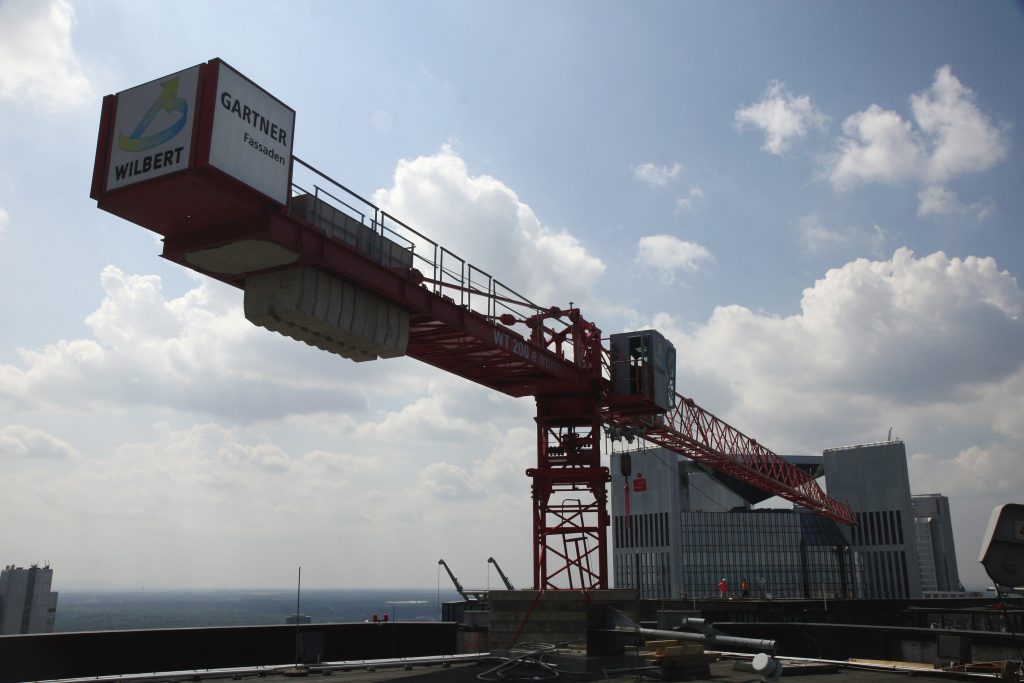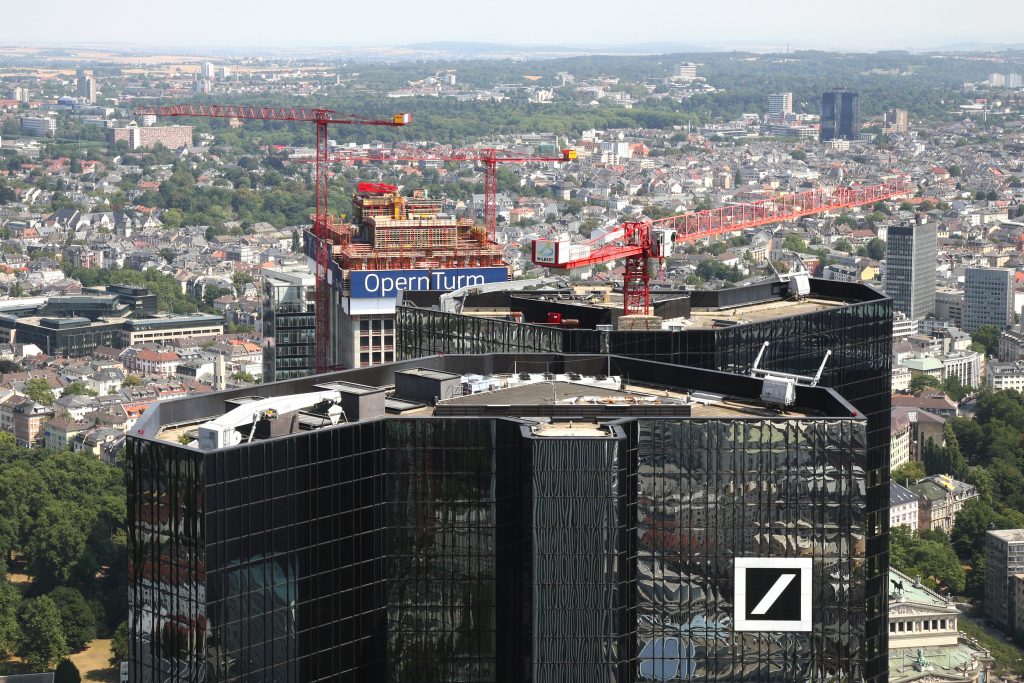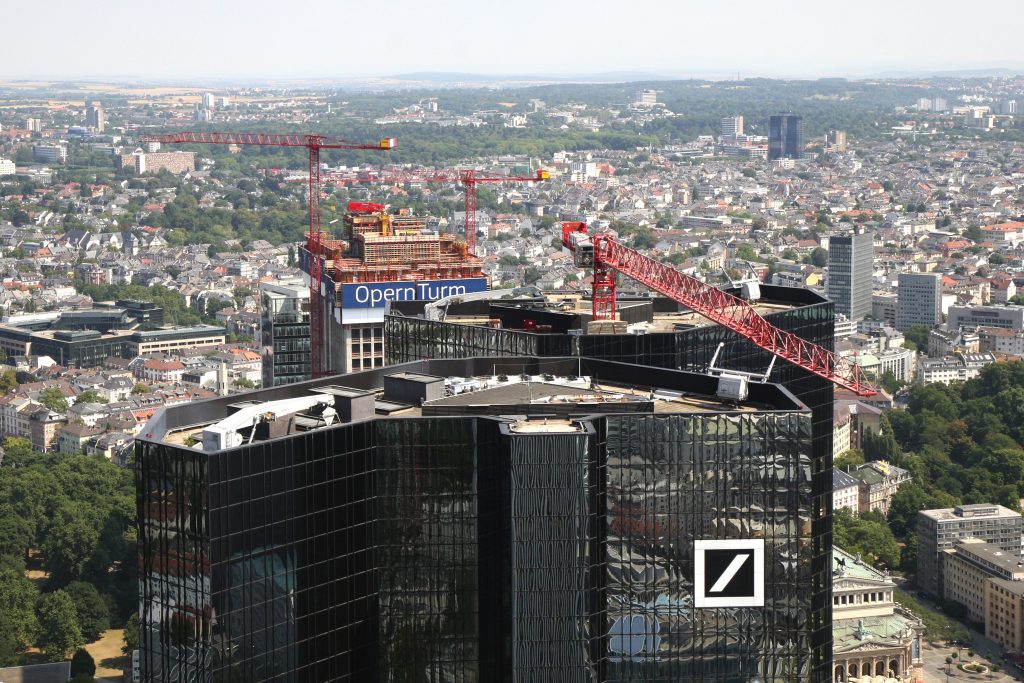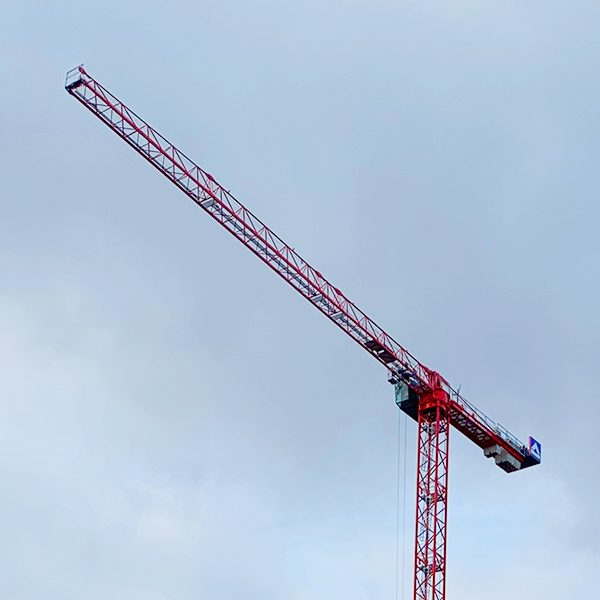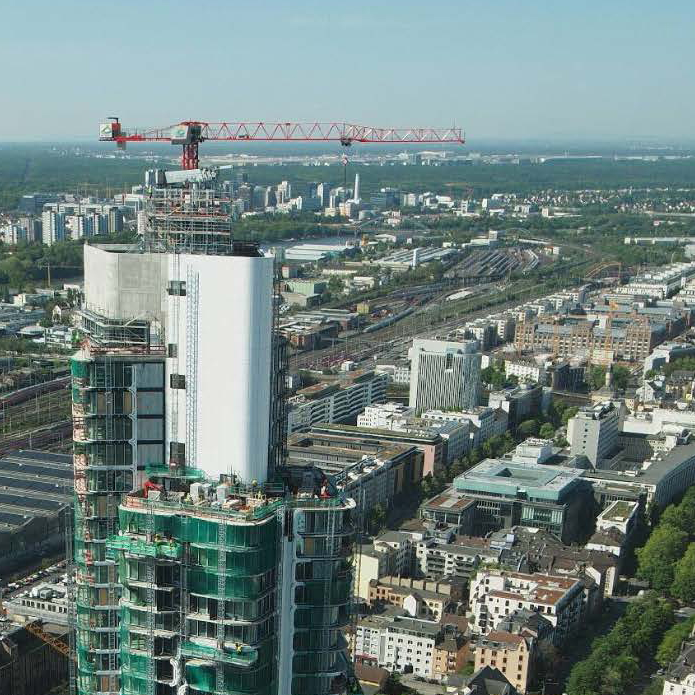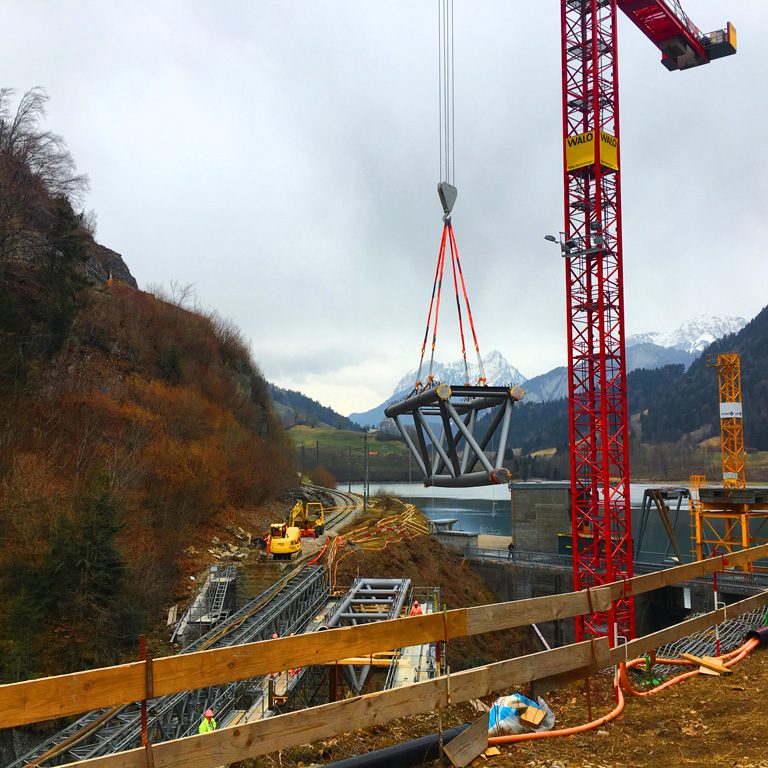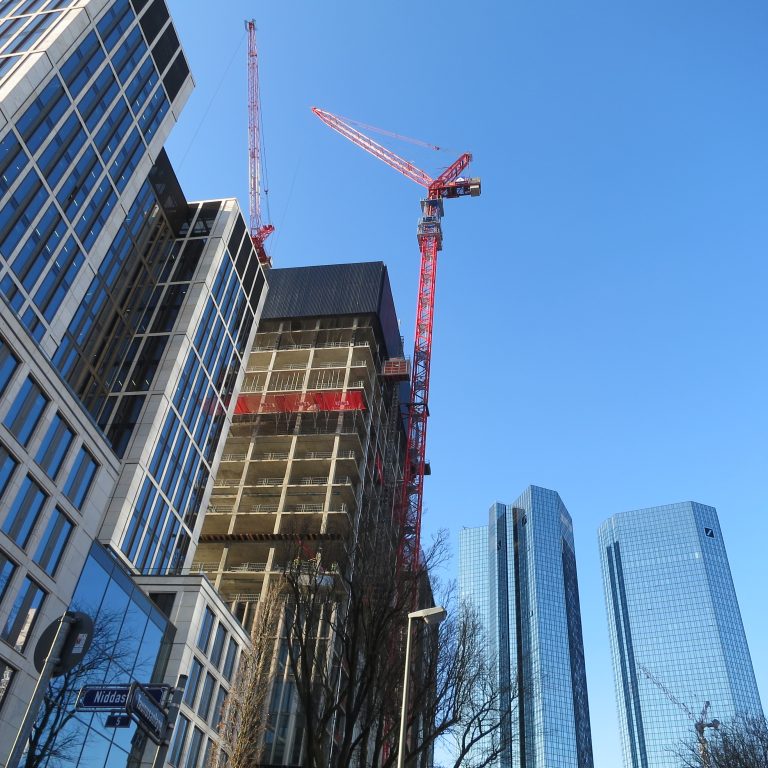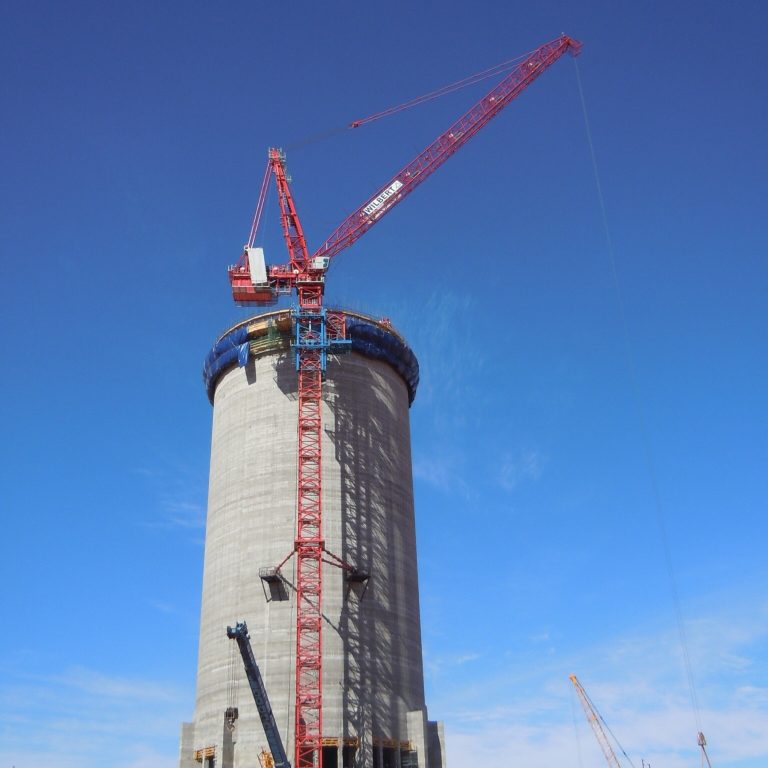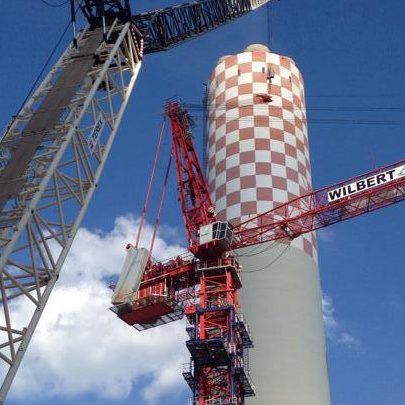The building
The twin towers of Deutsche Bank were built between 1979 and 1984 and feature prominently on Frankfurt’s skyline with their reflecting glass façades. In 2006, it was announced that the towers had to be refurbished due to changes in fire protection regulations. For this reason, Deutsche Bank had the towers fundamentally renovated from 2007 to 2010 after 22 years of use. The renovated building is certified according to the American LEED Platinum standard for existing buildings, as well as the DGNB German quality seal. As a result of the refurbishment, energy consumption was reduced by half, water consumption by more than 70 percent and CO₂ emissions by almost 90 percent.
The brief
During the renovations, a crane able to lift the individual elements of the façade into place was needed to replace the suspended aluminium and glass façade.
The challenge was that the crane had to be mounted on the roof of one of the twin towers and that the jib had to be long enough to reach the façade sections of both towers.
The implementation
A WT 200 e.tronic was mounted on the roof by means of a specially made steel structure. The WT 35 assembly crane, which was transported onto the roof in parts with the help of an external façade elevator, was used for this purpose and for the disassembly.
The twin towers of Deutsche Bank were built between 1979 and 1984 and feature prominently on Frankfurt’s skyline with their reflecting glass façades. In 2006, it was announced that the towers had to be refurbished due to changes in fire protection regulations. For this reason, Deutsche Bank had the towers fundamentally renovated from 2007 to 2010 after 22 years of use. The renovated building is certified according to the American LEED Platinum standard for existing buildings, as well as the DGNB German quality seal. As a result of the refurbishment, energy consumption was reduced by half, water consumption by more than 70 percent and CO₂ emissions by almost 90 percent.
The brief
During the renovations, a crane able to lift the individual elements of the façade into place was needed to replace the suspended aluminium and glass façade.
The challenge was that the crane had to be mounted on the roof of one of the twin towers and that the jib had to be long enough to reach the façade sections of both towers.
The implementation
A WT 200 e.tronic was mounted on the roof by means of a specially made steel structure. The WT 35 assembly crane, which was transported onto the roof in parts with the help of an external façade elevator, was used for this purpose and for the disassembly.
